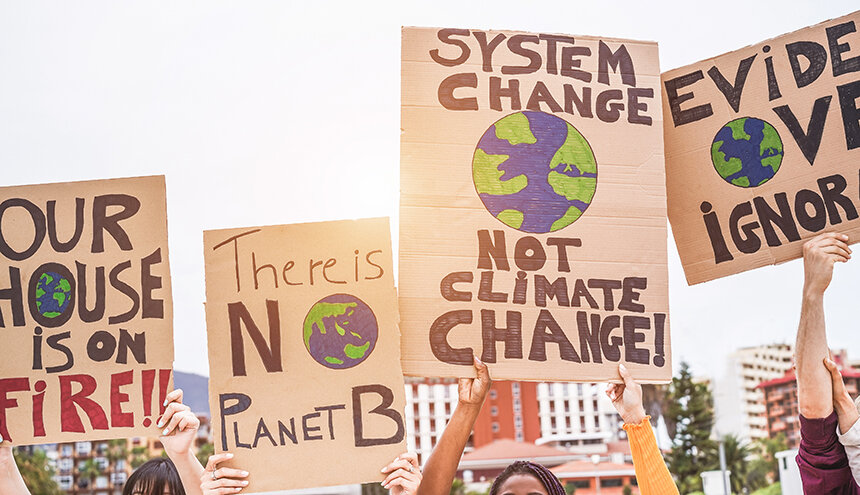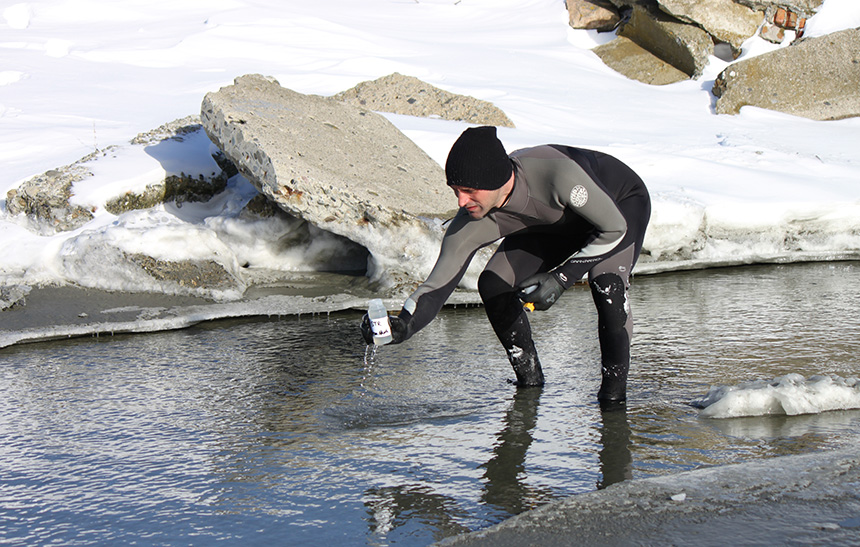Low-Income Renters Left Out in the Cold When it Comes to Green Energy, Efficiency Upgrades
February 14, 2021
For more than three years, Nnakabaale Kaasa lived in the cold.
He eventually moved most of his belongings into his bedroom, the only place in his Cranston, R.I., apartment that stayed warm during the winter.
“I have been still living in agony,” he wrote to his landlord on March 4 of last year. “My gas bill is very high due to the coldness in my kitchen.”
It was only when The George Wiley Center, a Pawtucket-based advocacy group, got involved and urged the landlord to accept free weatherization services provided by the Cranston-based Comprehensive Community Action Program that anything was done.
Last month the landlord finally agreed to free weatherization improvements.
Kaasa’s situation is far from unusual. For many renters, rising utility rates and drafty apartments are at the top of their list of concerns; in 2019, the United Way of Rhode Island received 56,000 calls for utility assistance — and that was pre-pandemic.
According to a 2016 consumer research survey by Freddie Mac, 70 percent of renters surveyed were moderately to greatly concerned about higher utility bills. In contrast, 63 percent were worried about rising rent.
This situation is unsustainable.
It’s also why whenever affordable, renewable energy is mentioned, it must include those who need it the most: renters.
“It’s a shame. It’s like the people that could have the biggest difference as far as savings, the people who are struggling and sometimes face utility terminations, are also sometimes the most unlikely to get weatherized,” said Camilo Viveiros, The George Wiley Center’s executive director. “It just amplifies the precarity of peoples’ situation.”
Viveiros has been working with renters like Kaasa since 2016 and has seen tenants’ resort to extreme measures to try and keep warm or reduce utility bills.
“Just this week we heard someone was using their oven to heat their home,” he said. “We are always finding out about people who are living in dangerous conditions.”
While there are discounts and heating-assistant programs that can help low-income renters pay their bills, they are merely Band-Aids on a complicated situation that involves landlords, an aging housing stock, and a lack of adequate affordable, green rentals.
Conflicts of interest
The split incentive dilemma is one of the biggest unsolved issues inhibiting renters from having access to cleaner, affordable energy.
“This conflict of interests between landlords and tenants, frequently referred to as the split-incentive problem, poses perhaps the biggest hurdle to controlling energy costs in rental housing,” according to a 2013 research brief by the Joint Center for Housing Studies of Harvard University. “Rental property owners make decisions about features that affect energy efficiency, including the quality of appliances, insulation, windows, and doors. Tenants, in contrast, make choices about energy use such as turning lights on or off, setting the thermostat, or deciding what water temperature to use for showering or washing clothes. Incentives for conservation or for indifference to energy waste depend on who pays the bills.”
It should be mentioned that Rhode Island does have some financial incentives for qualifying landlords to upgrade their holdings.
One of those incentives — an option Kai Salem, policy coordinator at Green Energy Consumers Alliance, called “important” — is the 100 percent landlord instructive, which means that for landlords of one- to four-unit homes, 100 percent of the insulation upgrades are covered up to $4,000 per unit.
But problems arise in a few cases: One, if the landlord doesn’t know about this program. Two, if the landlord doesn’t care enough to go through the process of applying for this program, and three, if the landlord knows that, upon closer inspection, their holdings will not meet certain code standards.
“Sometimes the landlords are worried about code enforcement, so you have this mixture of people living in housing that needs legitimate repair and may not be up to code,” Viveiros said.
And with an aging housing stock comes even more problems. According to a 2012 survey, the median age of housing stock in Rhode Island hovers in the 50-to-61-year range. This means that the likelihood of outdated systems that defer energy upgrades from being made is more likely.
According to a 2020 white paper by the Energy Futures Group, “Weatherization barriers are increasingly being recognized as significant hurdles in addressing home weatherization needs. While there are many programs to expand home weatherization, efforts to address these barriers are not as well-known, accessible, or widely utilized.”
Salem noted that when a home is found to have weatherization barriers, it’s deferred from the weatherization program.
“A lot of renters live in areas of the state where there’s old housing stock that hasn’t had full upgrades done,” Salem said. “A lot of those houses get what we call a deferral on pre-weatherization barriers because of things like asbestos in the basement or really old, faulty wiring … and they create hazards and barriers for doing any kind of energy-efficiency work.”
Is the price right?
While older housing stock presents problems for landlords and tenants alike, the potential for new development to contain state-of-the-art energy efficiency and lower utility costs is much greater.
In 2019, Truth Box Architects and D+P Real Estate completed The Upton PVD, an affordable workforce apartment complex next to the Urban Greens Co-op Market on Cranston Street in Providence.
The Upton touts itself as “elegant, energy efficient housing at affordable prices,” with perks including “super-insulated, double stud wall construction for extreme energy efficiency and superb indoor air quality,” electric charging stations, and an energy recovery ventilator in each unit. Income restrictions apply, and the going rate for a one-bedroom unit is $1,425 a month, which includes hot water.
While this sort of green housing development is to be applauded, workforce housing isn’t the same as low-income housing. In fact, the price for a one-bedroom room unit at The Upton is $133 more a month than the average one-bedroom rental in the state. Perhaps that small amount is worth it for nicer facilities and lower utility bills, but the state still lacks equitable low-income housing with similar “extreme energy efficiency.”
And it sure needs it.
According to a recent draft of the Anti-Displacement and Comprehensive Strategy report by Providence’s Department of Planning and Development, 64 percent of the city’s households are considered to be cost-burdened. Of those, nearly 24 percent are severely cost-burdened.
“It is important to note that while housing and other costs continue to rise, the median income of City residents has remained stagnant, only increasing by 1.3% annually between 2010 and 2017.”
Adding higher utility rates to the mix can mean the difference between dinner and heat for many low-income renters.
Terri Wright is familiar with the utility struggles that many renters grapple with. She grew up in a drafty apartment that forced her mother to turn on the stove to keep the family warm.
Wright, who is an organizer for Providence-based Direct Action for Rights and Equality (DARE) and a member of the Tenant and Homeowners Association, a group of low-income tenants and homeowners who work collectively to prevent foreclosures and evictions and to address unsafe housing conditions, said many of the people she works with also struggle to pay their bills, and windows leaking in cold air or poor insulation makes matters even worse.
“It’s like you have to learn how to skillfully conserve that energy,” she said. She urged people to unplug what they aren’t using at the moment, but noted that with some energy-sucking items, such as refrigerators, this isn’t an option.
Community solar
While there is a lack of energy-efficient low-income housing in Rhode Island, there are some private developers and real-estate firms that are making strides to both help their tenants save money while increasing the value of their holdings.
Fairstead, a real-estate company based in New York, took over the Echo Valley Apartments affordable housing complex in West Warwick in 2018. Since its arrival, the company has updated the buildings and installed 497 kilowatts of rooftop community solar.
“This first-of-its-kind community solar project on affordable housing will provide power not only for the Echo Valley complex, but also for National Grid RI customers throughout the state,” Will Blodgett, a founding partner at Fairstead, wrote in an email. “The residents of Echo Valley have been incredibly supportive of this project, and we have sought their input and advice throughout the process.”
Community solar can save customers 8-12 percent per electric bill, and, according to Blodgett, can reduce the carbon footprint of holdings by an average of 30 percent.
Fairstead is somewhat avant-garde when it comes to updating older holdings with solar panels, something that many smaller, mom-and-pop landlords may not be equipped to do.
However, tenants around the state do have the option to tap into larger community solar projects, like the one at Fairstead. But many communities are skeptical of such promises to “join and save!”
“I spoke about solar panels, and the answer I was met with was the sun doesn’t shine on this side, so that’s not gonna work,” Wright said.
Building trust in communities that have been historically taken advantage of and lied to takes time and effort, but Wright is hopeful that recent calls for equity and stronger legislation could make energy efficiency more feasible for renters who have little control over the properties they live in.
“It’s a great time to set some rules and build Rhode Island,” she said. “There is strength in the community. We have all this information and we just need legislation. We can make Rhode Island vibrant.”




Thank you for this very informative piece. It is so helpful to show how business as usual has unequal impacts (split incentive) and how changing how we do things can address climate change AND promote the health and wellbeing of our population right now.
i rented for a few years in Richmond where my rent was $800 for a studio with nothing
included. the duplex had been renovated as a summer getaway for the NYC landlords but the rental duplex was never insulated. with the electric heat, my bill was often $350 a month in winter and i still had to wear long underwear and a heavy sweater in the house. i applied for RISE but the landlord wouldnt go for it. probably because a lot was not up to code.
cant we set some minimum standards for rental housing? why are landlords allowed to get away with these slum conditions? i was making minimum wage at the time (grossing $460 a week) and this was by far the cheapest place i could find.
i finally got heating assistance grants but feel like that money was wasted because i still froze my a@* off all winter. something must be done!!
i think rental properties should be inspected/regulated!
thank you,
elizabeth vachon
This issue is as old as the weatherization program itself. Perhaps the state could inspect the low-income housing that isn’t weatherized and force the issue of code compliance. And the federal Low Income Weatherization Assistance Program and state energy efficiency programs could cover pre-weatherization upgrades such as replacement of knob and tube wiring in the weatherization assistance or incentives.
Decades ago, and I imagine periodically since, the federal government did a study that showed renter turnover in weatherized apartments is greatly reduced. So drafty, uninsulated rentals are forcing people to move or go homeless. And, that also means it is in the interest of the landlord to weatherize. If they only knew, you might think. But it really comes down to if they only cared.